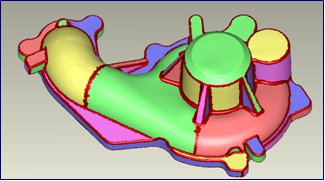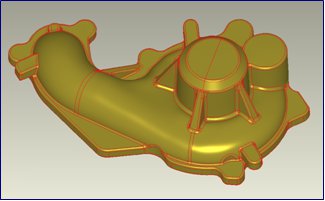Digital Shape Reconstruction Based on Measured Data
Digital Shape Reconstruction - or in other words Reverse Engineering - is a challenging high-tech area of computer aided geometric design. This technology is primarily applied when a digital model of an existing physical object needs to be created from measured data in order to perform various complex calculations. There is a wide range of applications in the engineering, medical and cultural fields, such as, reconstructing parts manufactured a long time ago, creating new automobiles based on clay models, or designing and manufacturing individual hearing aids, dentures or prosthetic devices.
The created digital representation can be utilized not only for graphic rendering, but it also facilitates the redesign of objects, creating variants, virtual simulation and computer analysis of various properties. The digital representation makes it also possible to manufacture these objects by numerically controlled machine tools.
Digital shape reconstruction is a fairly complex computational procedure. Our current research includes topics in all phases of the process, as follows:
- 3D data capture (scanning)
- merging and decimating large point clouds
- creating and repairing triangular meshes
- segmentation (partitioning into disjoint regions)
- surface classification
- approximating primary surfaces
- approximating connecting surfaces
- perfecting models, constraints and fairing
- quality assurance
- export to various CAD applications
Our former research and development work in digital shape reconstruction has been conducted in a tight cooperation with a U.S. software company (www.geomagic.com). Illustrations in this document have also been produced by the Geomagic Studio system.

1. Triangulated polygon mesh

2. Segmentation, detecting primary regions

3. An accurate, reconstructed CAD model

4. Indicating deviations from the measured dataset